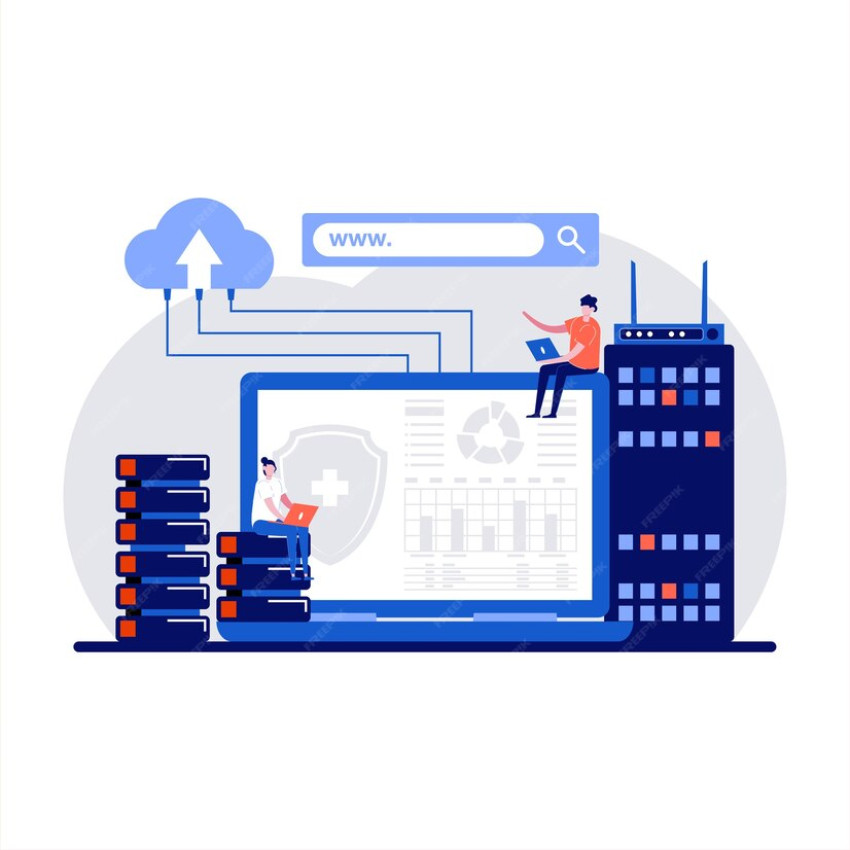
In the ever-evolving landscape of technology, businesses are constantly seeking ways to stay agile and responsive to changing market dynamics.
Understanding Agility in Cloud Computing:
Agility, often a focal point in cloud computing training in pune, in the context of cloud computing refers to an organization's ability to rapidly and efficiently adapt to changing demands, scale resources up or down as needed, and respond quickly to market opportunities or challenges. This agility is achieved through the use of cloud services, which provide on-demand access to a wide range of computing resources, including servers, storage, databases, networking, and more, without the necessity for substantial initial expenditures in hardware and infrastructure.
Key Advantages of Agility in Cloud Computing:
1. Rapid Deployment:
One of the most significant advantages, frequently addressed in cloud computing courses, of cloud computing is the speed at which resources can be provisioned.
With a few clicks or automated scripts, organizations can deploy servers, databases, and other resources in minutes rather than weeks or months. This agility is crucial for quickly launching new products or services and responding to customer demands.
2. Scalability: Cloud computing, often a core focus in cloud computing certificate programs, offers elastic scaling, allowing organizations to increase or decrease their resource allocation in response to changes in demand. This ability to scale resources up during peak periods and down during off-peak times ensures efficient resource utilization and cost savings.
3. Cost Efficiency: Cloud services, a fundamental topic taught in cloud computing institute in hyderabad programs, often follow a pay-as-you-go or pay-for-what-you-use model. This eliminates the need for organizations to invest in and maintain excess capacity, reducing capital expenditures and operational costs. Organizations can align their expenses with actual usage, optimizing their budget.
4. Global Reach: Cloud providers, as explained in cloud computing training courses, operate data centers worldwide, making it easier for organizations to expand their reach to global markets. This global infrastructure ensures low-latency access to resources and services for customers and users worldwide.
5. Innovation Acceleration: Agility in cloud computing fosters innovation by enabling organizations to experiment with new ideas and technologies. With the ability to rapidly provision resources, teams can develop, test, and iterate on new applications and services more quickly.
6. Disaster Recovery and Business Continuity: Cloud providers offer robust disaster recovery and backup solutions. This means that organizations can replicate their data and applications across multiple geographic regions, ensuring data resilience and high availability in the event of disruptions.
Types of Agility in Cloud Computing:
1. Infrastructure as a Service (IaaS): IaaS provides organizations with the foundational building blocks of computing infrastructure, including virtual machines, storage, and networking. This type of agility allows businesses to create and manage their IT environments without the need for physical hardware.
2. Platform as a Service (PaaS): PaaS offers a higher level of abstraction, providing a platform for developing, deploying, and managing applications. PaaS solutions include development frameworks, databases, and application hosting environments. This type of agility is ideal for software development teams seeking rapid development and deployment capabilities.
3. Software as a Service (SaaS): Software as a Service (SaaS): SaaS is a model where software applications are provided over the internet through a subscription-based approach. This type of agility enables organizations to access and use software without the burden of installation, maintenance, and infrastructure management. Common instances include email platforms such as Gmail and efficiency packages like Microsoft Office 365.
4. Serverless Computing: Serverless computing is an emerging type of agility that abstracts away server management entirely. Organizations using serverless platforms can focus solely on code development, as the cloud provider automatically handles server provisioning, scaling, and resource allocation. This allows for ultra-fast development and deployment of microservices and functions.
5. Containerization and Orchestration: Containers, such as Docker, provide agility by packaging applications and their dependencies into a single unit that can run consistently across different environments. Kubernetes, an orchestration platform, further enhances agility by automating container deployment, scaling, and management.
6. Multi-Cloud and Hybrid Cloud: Multi-cloud and hybrid cloud strategies provide agility by allowing organizations to leverage resources from multiple cloud providers or combine on-premises infrastructure with cloud services. This flexibility enables organizations to choose the best cloud solutions for specific workloads and scenarios.
EndNote:
In a world characterized by rapid change and fierce competition, agility in cloud computing has become a strategic imperative for businesses of all sizes and industries. The ability to swiftly adapt to evolving market conditions, efficiently allocate resources, and accelerate innovation can make the difference between thriving and falling behind. As organizations continue to harness the power of cloud computing, they unlock new possibilities for growth, scalability, and resilience in an increasingly digital world. Embracing agility in cloud computing is not just a technological shift; it's a transformational journey that positions businesses for success in the digital age.



